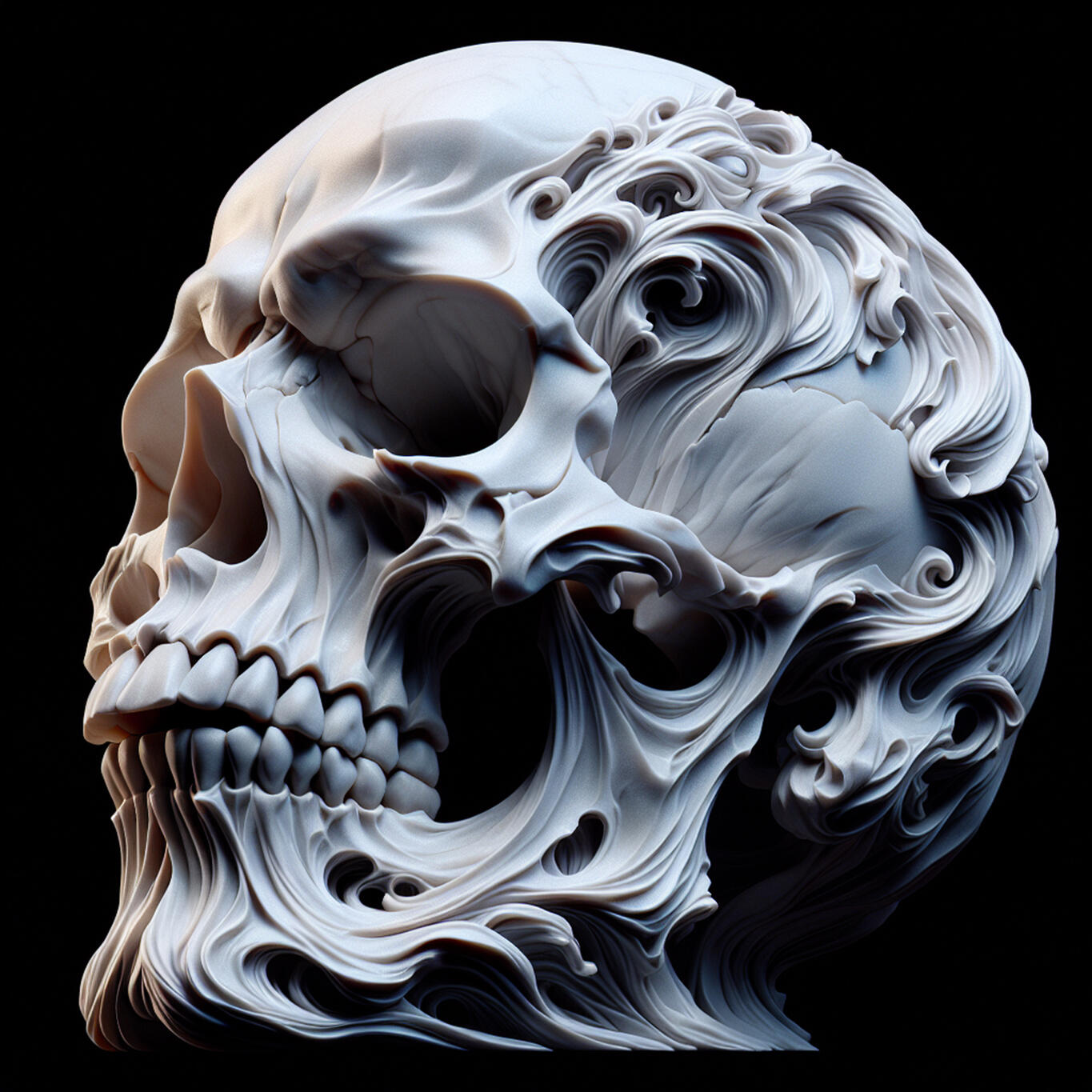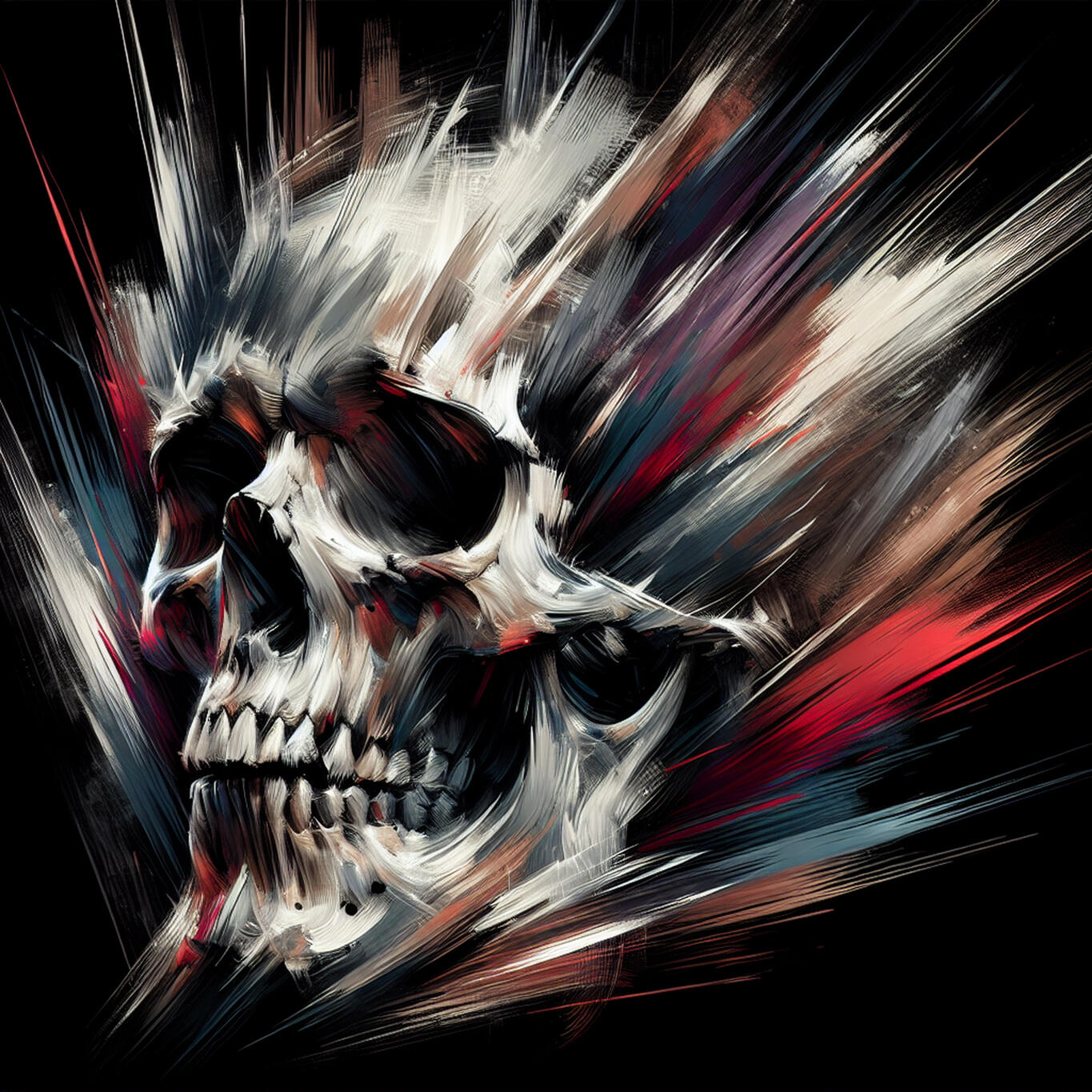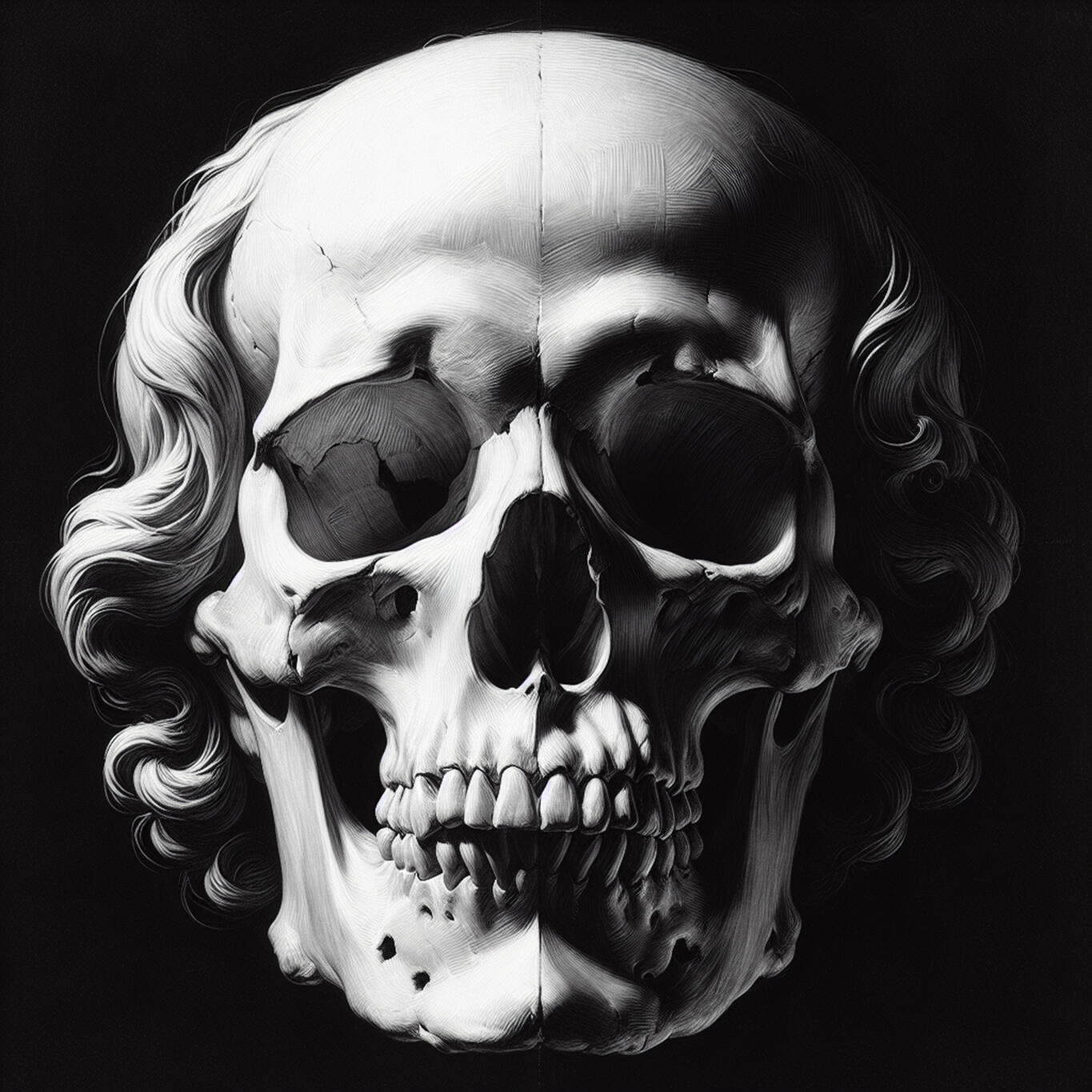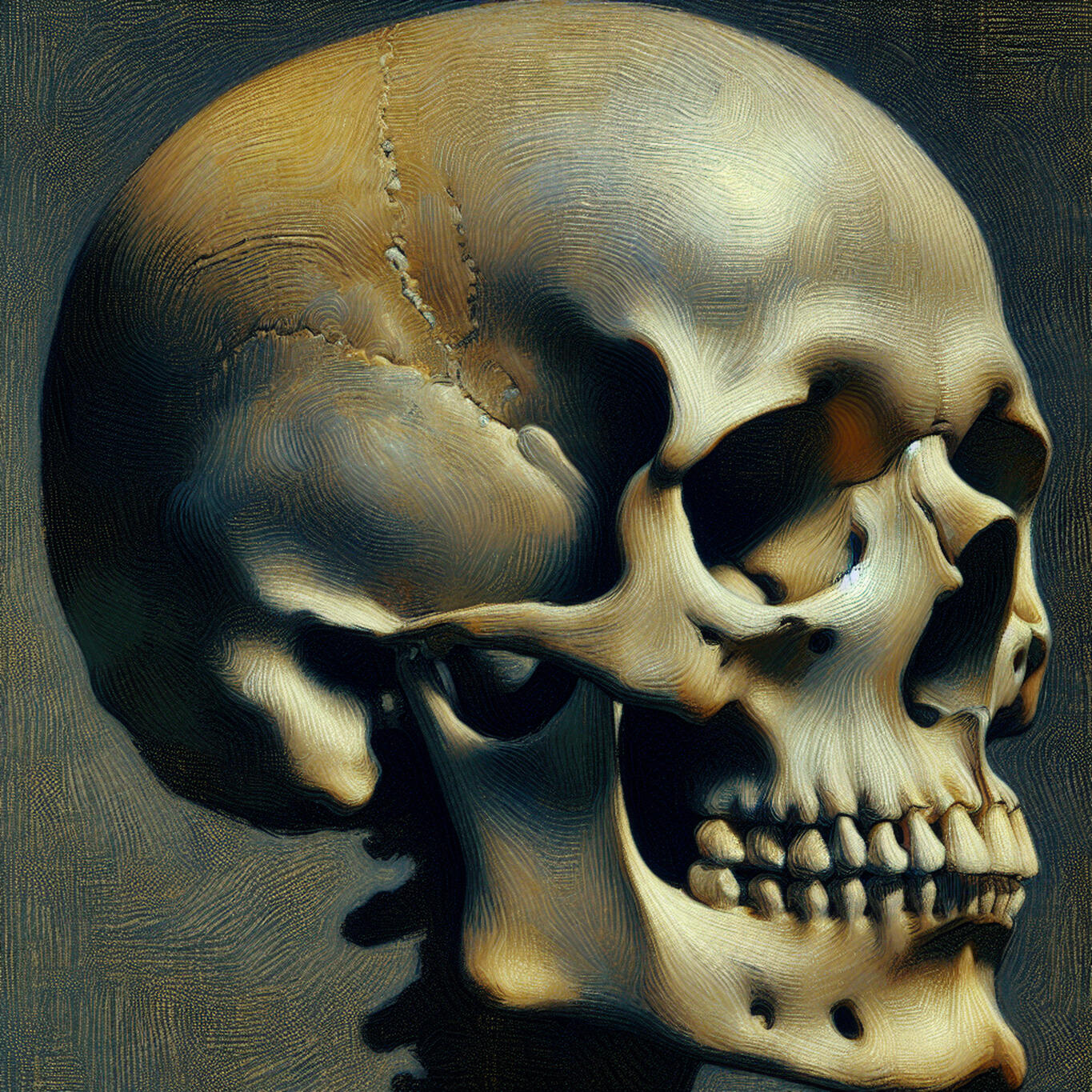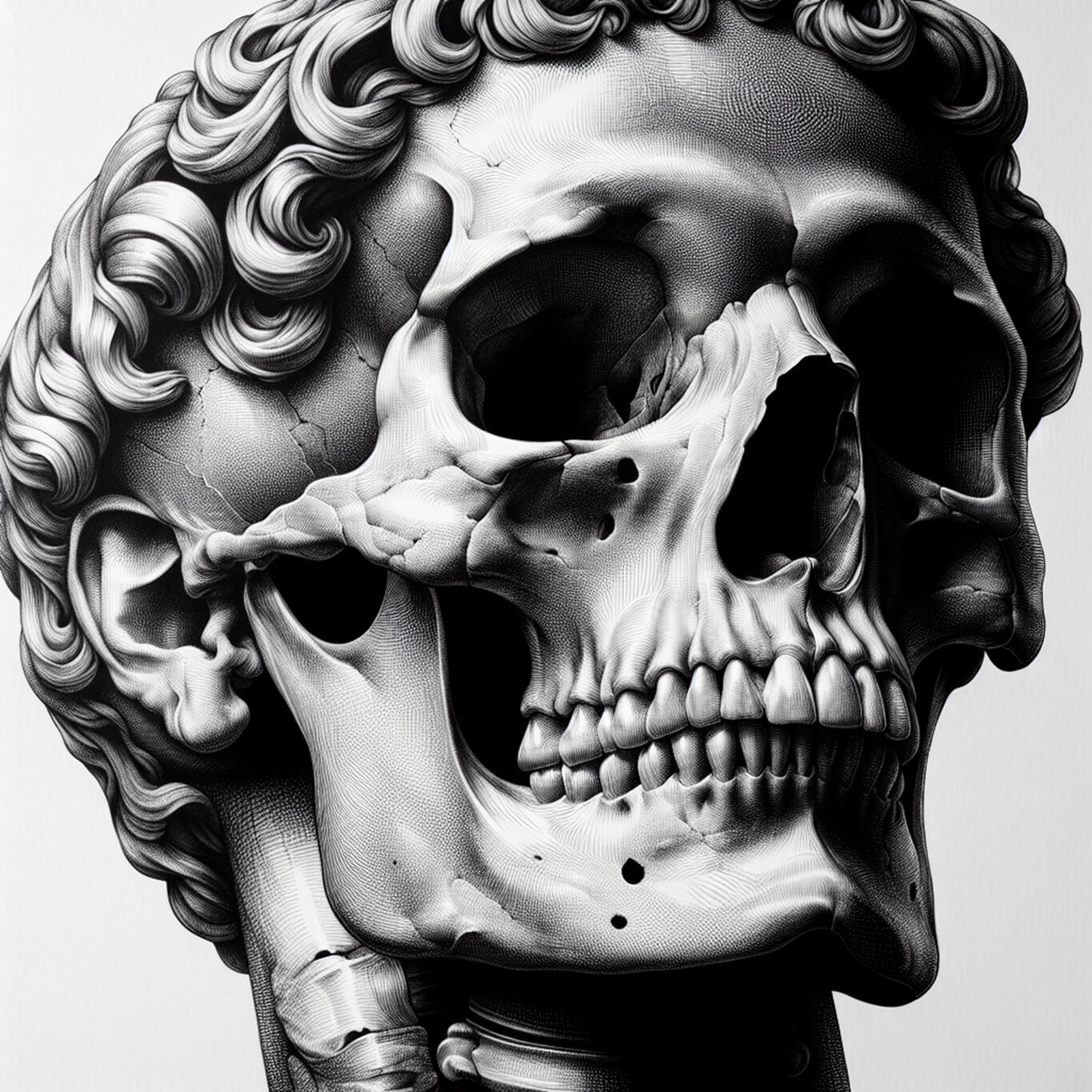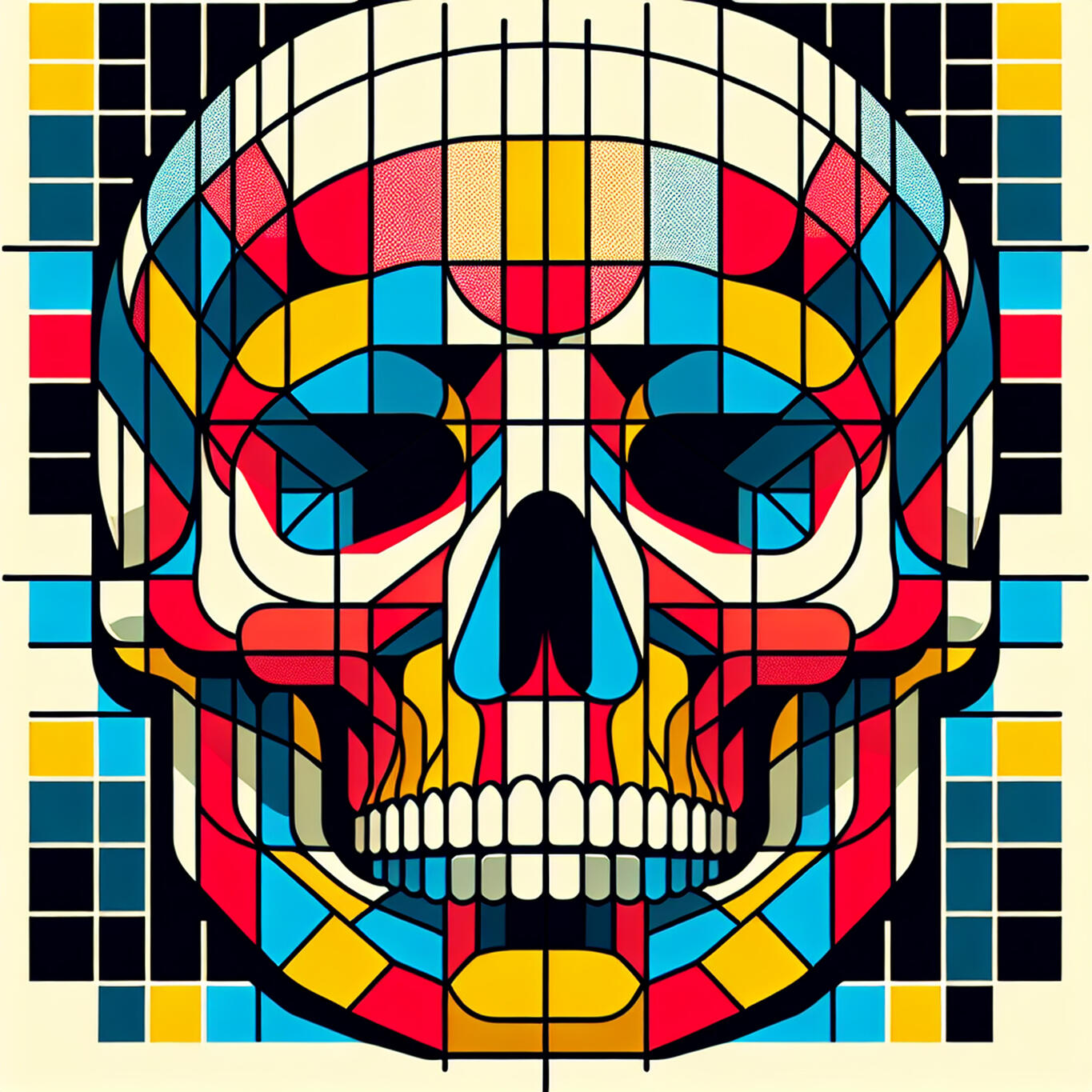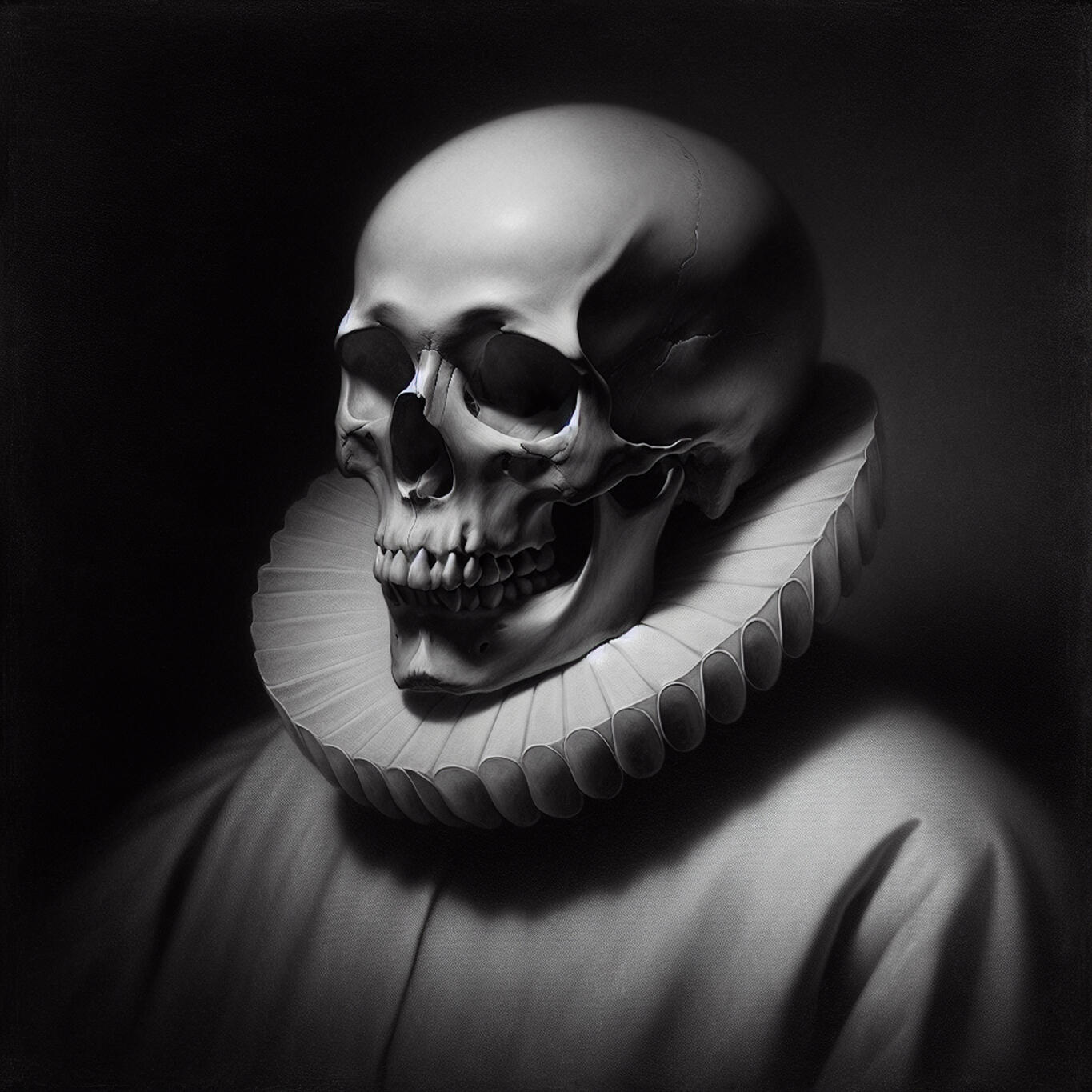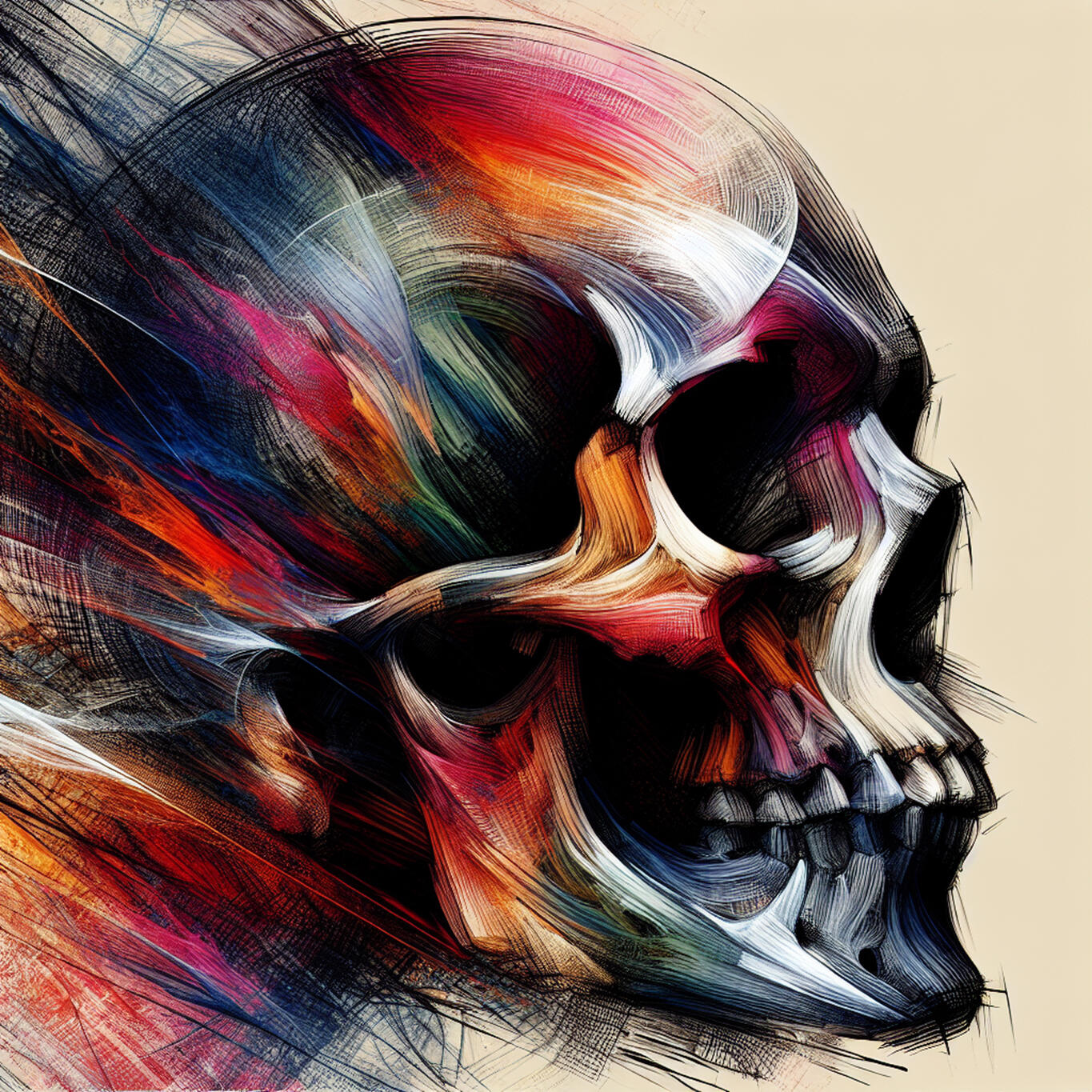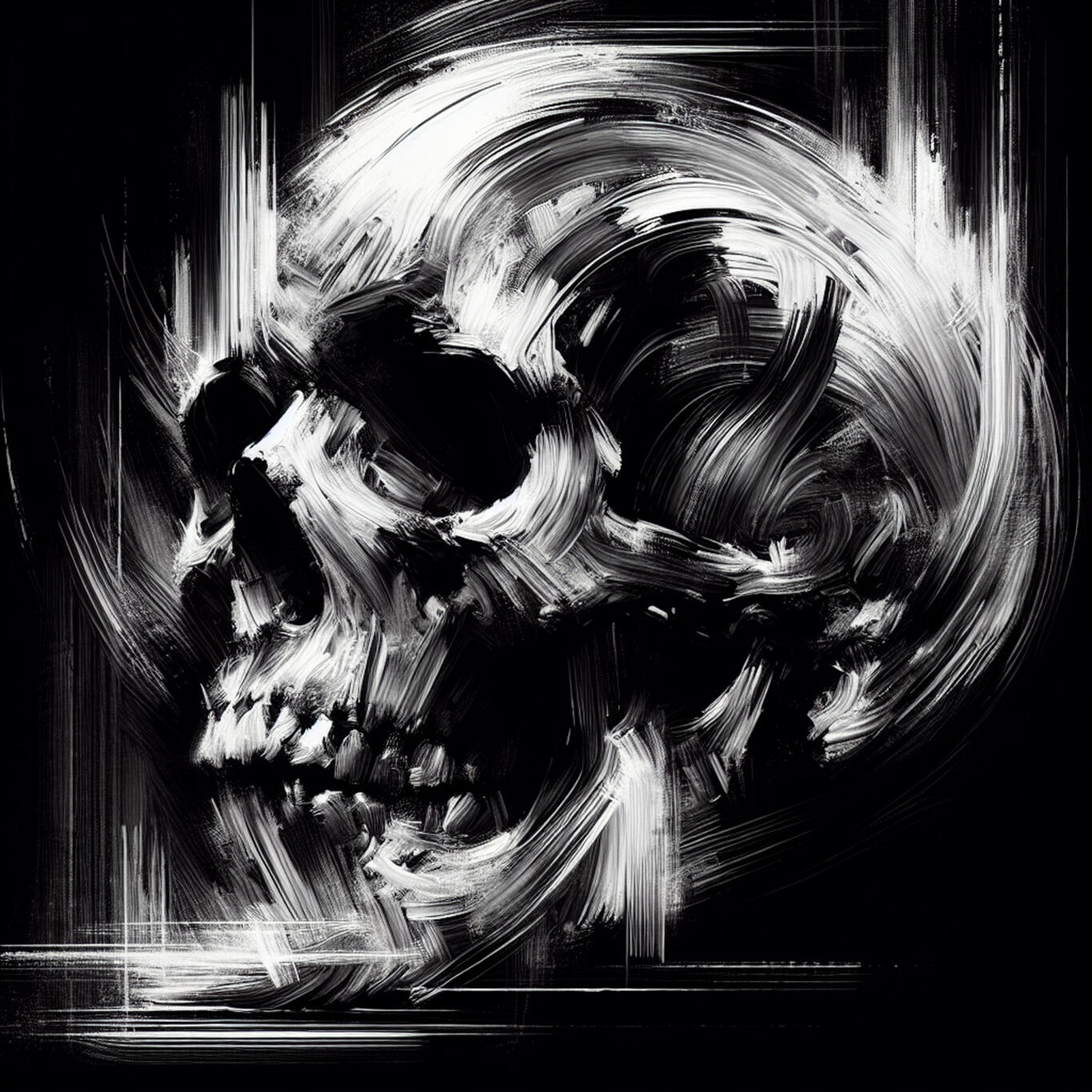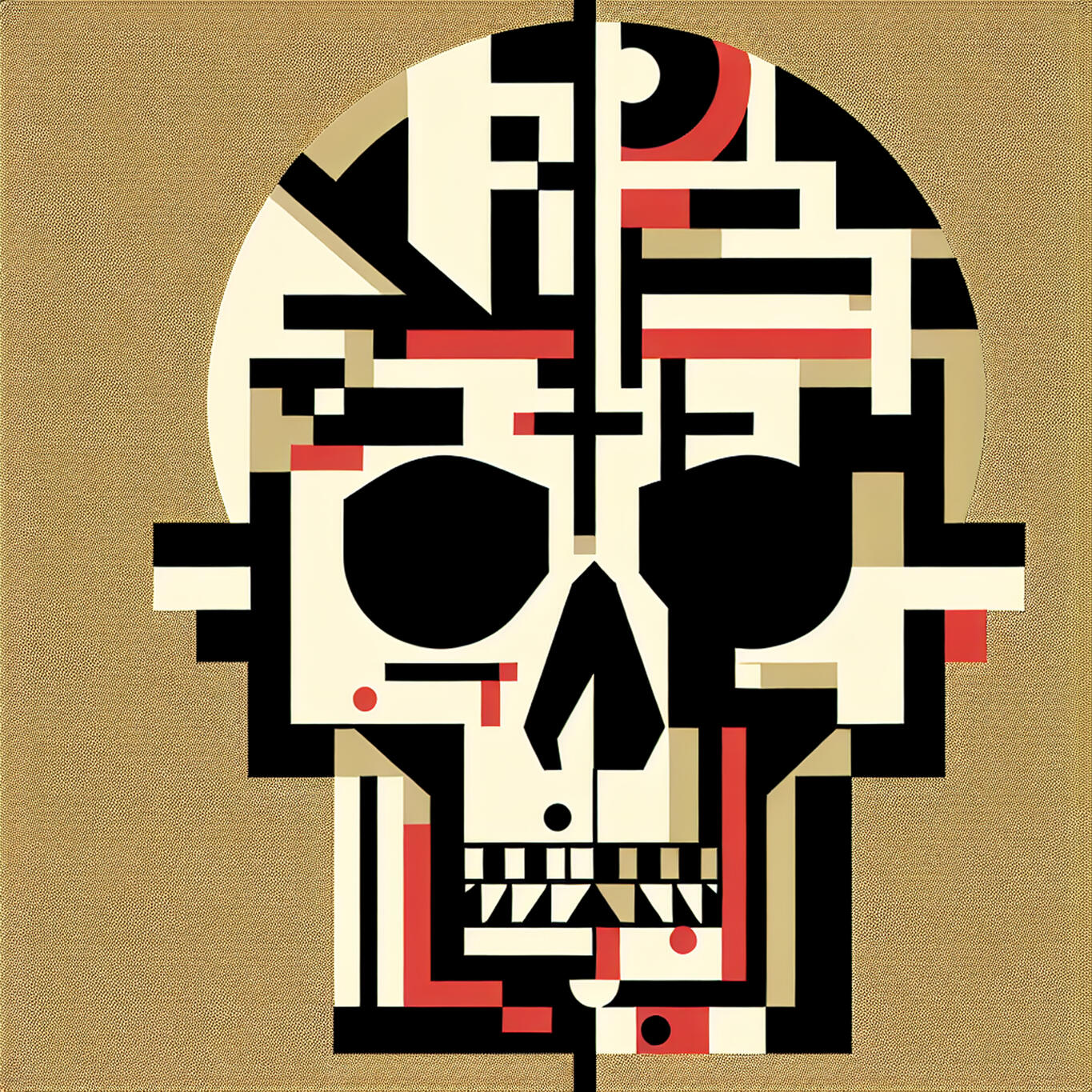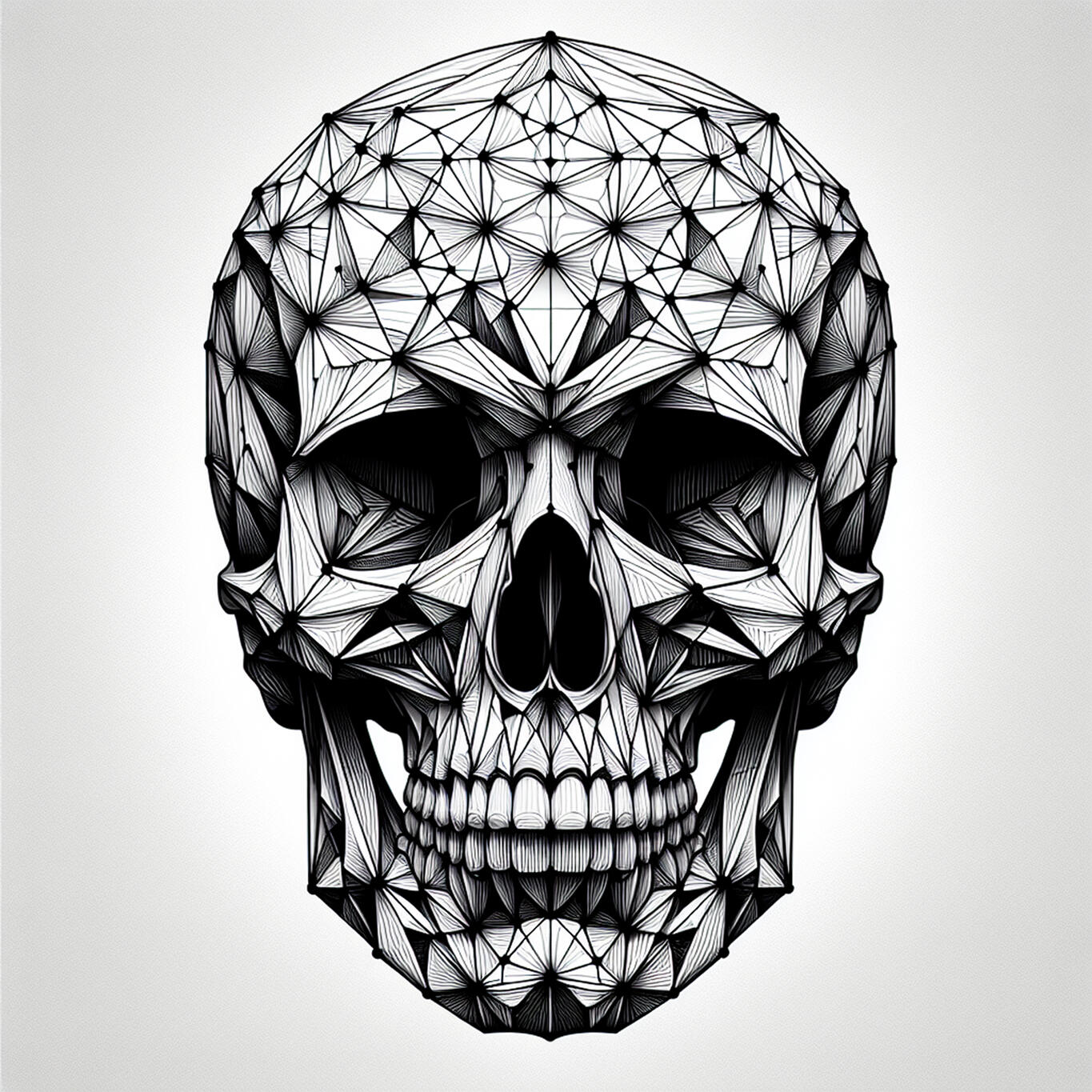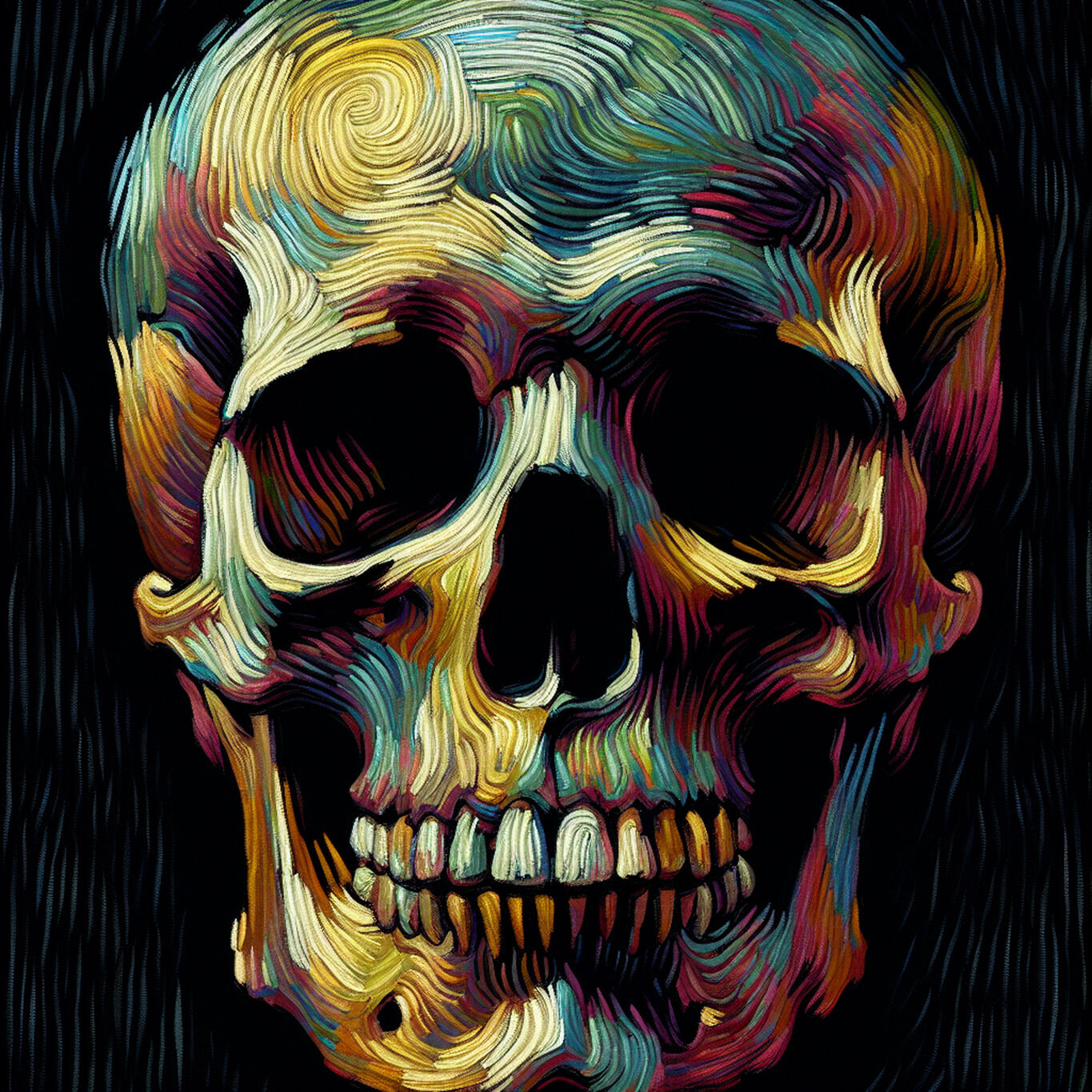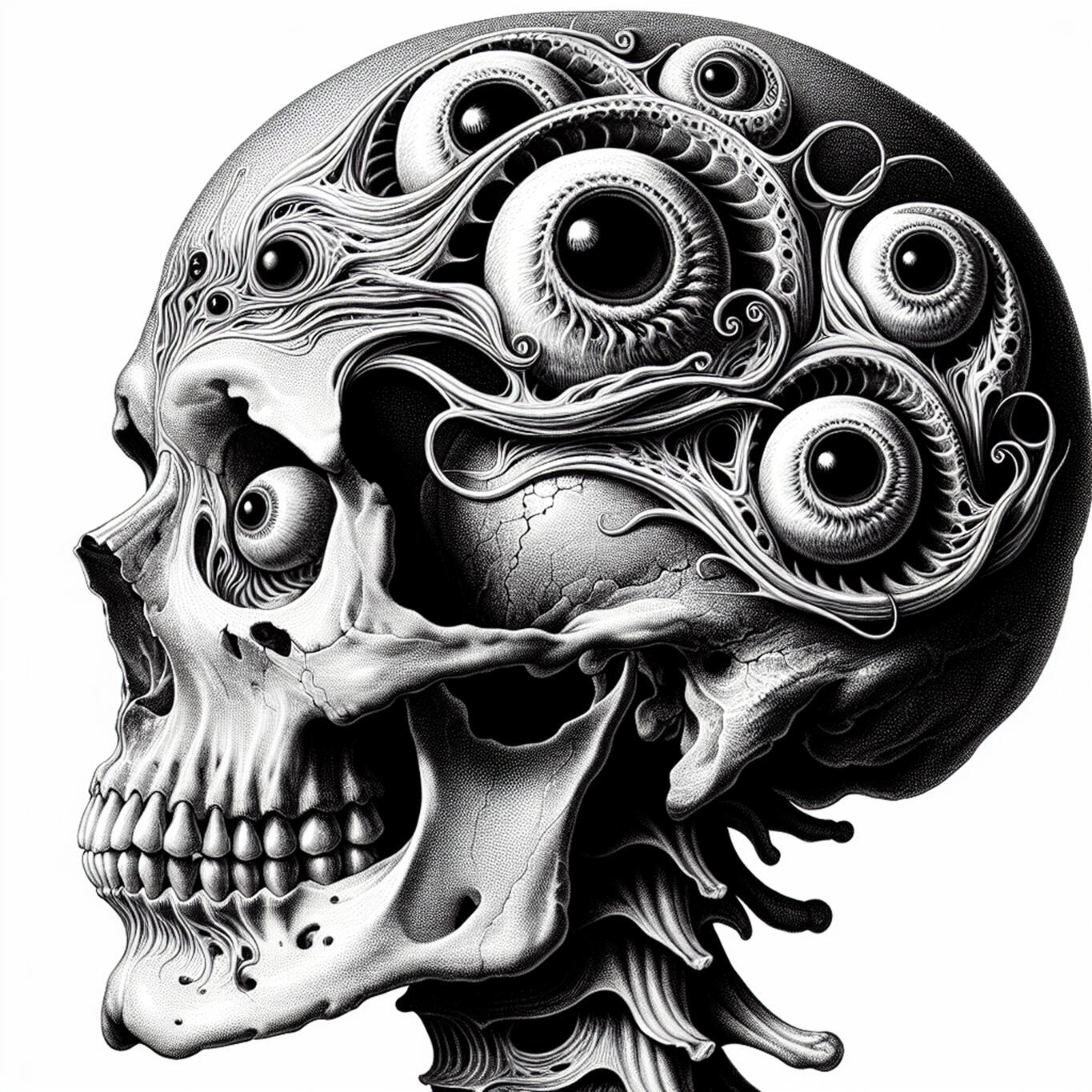AI’s Intepretation and Distortion of Artistic Legacy
About
SKULLS IN THE MACHINE is an exploration of how AI sees, distorts, and misinterprets artistic legacy. Using structured prompts and DALL·E 3, this project reimagines 400 skulls in the styles of history’s most influential artists. Some interpretations feel eerily precise; others collapse into beautiful failure—revealing the friction between machine logic and human intuition.Mistakes are not errors but artifacts of an AI struggling to understand art. This recursive process—where AI generates, analyzes, and refines—exposes the invisible mechanics of style, bias, and interpretation. What emerges is not a reproduction, but an entirely new digital aesthetic.
1
Machine
Dall•E 3.0
100
Artists
Da Vinci, Munch, Titian, Bosch, Caravaggio +95
10
Art Movements
Rennaissance, Baroque, Neoclassicism, +7
2
Color Styles
Color & Monochrome
158
Lines of Code
Python3 with CoPilot
2
Prompting Techniques
Generic & AI Generated
400
Skulls
Input
Movements & Artists
used as inspiration for AI
| Movements | Artists |
|---|---|
| Rennaissance | Bondone, Boticelli, Da Vinci, Michelangelo, Raphael, Titian, Dürer, Hobein, Bosch, Bruegel |
| Baroque | Caravaggio, Rubens, Velázquez, Rembrandt, Gentileschi, De la Tour, Poussin, Vermeer, Lorrain, Steen |
| Neoclassicism | David, Ingres, Canova, Kauffman, West, Brun, Flaxman, Prud'hon, Hamilton, Mengs |
| Romanticism | Goya, Turner, Delacroix, Friedrich, Géricault, Bryullov, Blake, Martin, Scheffer, Vernet |
| Realism | Millet, Courbet, Daumier, Repin, Eakins, Bastien-Lepage, Leibl, Makovsky, Homer, Friant |
| Impressionism | Monet, Renoir, Degas, Manet, Pissarro, Morisot, Cassatt, Caillebotte, Sisley, Gonzalès |
| Post-Impressionism | Gogh, Cézanne, Gauguin, Toulouse, Lautrec, Bernard, Seurat, Angrand, Rousseau, Luce, Anquetin |
| Symbolism | Moreau, Mucha, Odilon, Khnopff, Delville, Stuck, Vedder, Malczewski, Schwabe, Toorop |
| Expressionism | Schiele, Modigliani, Munch, Kirchner, Marc, Kandinsky, Jawlensky, Feininger, Münter, Schmidt-Rottluff |
| Avant-Garde | Malevich, Kandinsky, Mondrian, Doesburg, Moholy-Nagy, Lissitzky, Arp, Klee, Rodchenko, Delaunay |
The Skulls in the machine

Rennaissance - Michelangelo. AI Prompt. Colored.

Expressionism - Rottluff. AI Prompt. Color.

Neoclassicism - David. Generic Prompt. Black & White

Realism - Leibl. AI Prompt. Color.

Neoclassicism - Ingres. AI Prompt. Black & White

Abstract - Mondrian. AI Prompt. Color.
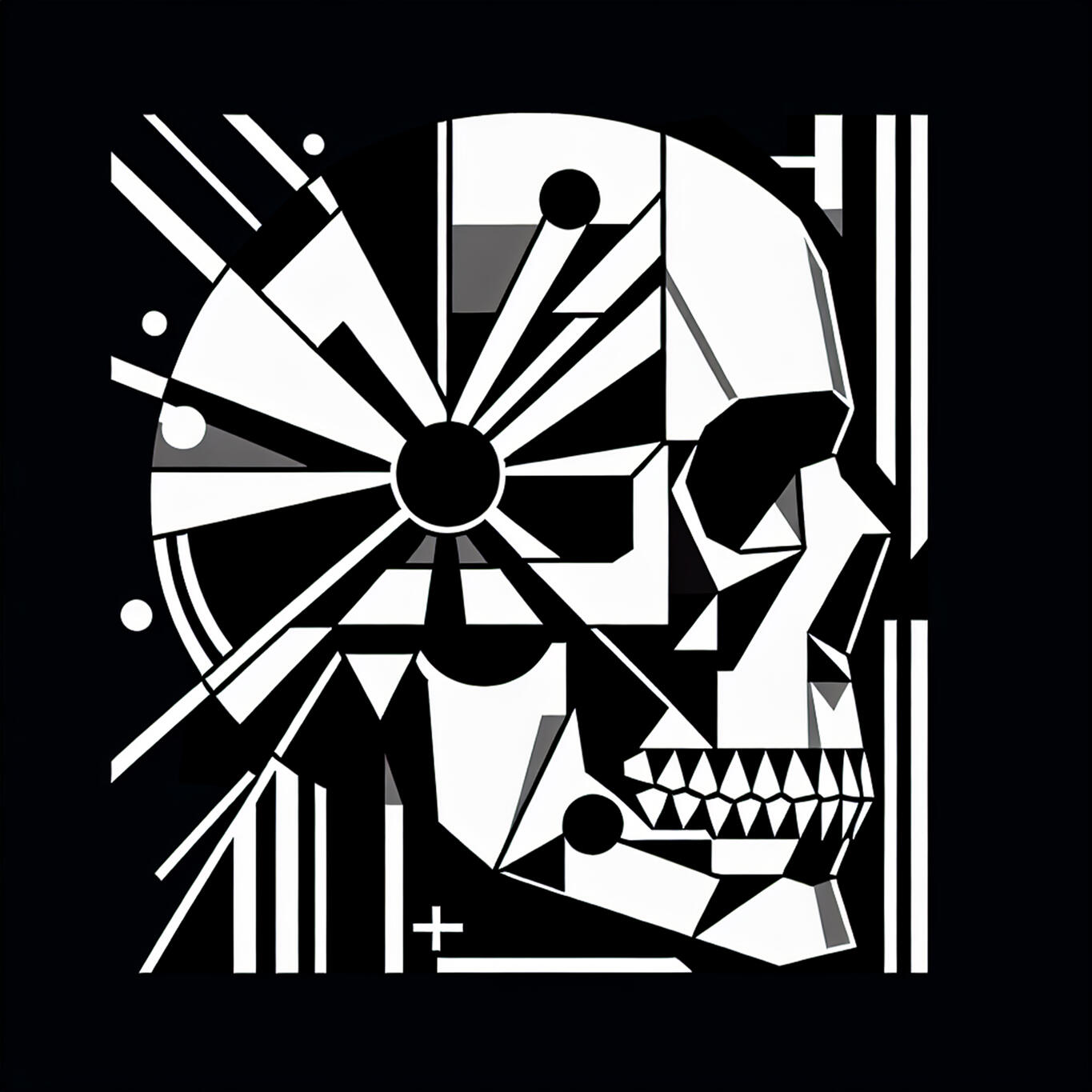
Avant-Garde - Mondrian. Generic Prompt. Black & White

Baroque - Velazquez. AI Prompt. Black & White.

Impressionism - Degas. AI Prompt. Color.

Expressionism - Rottluff. AI Prompt. Color.

Avant-Garde - Malevich. AI Prompt. Color

Avant-Garde - Doesburg. AI Prompt. Black & White.

Post-Impressionism - van Gogh. AI Prompt. Color.

Rennaissance - Bosch. Generic Prompt. Black & White.
Own a fragment of the Machine's vision
Leave your email and be the first to know, when the shop is open.
Don't worry about spam. I'm lazy. But i'll keep you updated, if new products or series are available
FAQ
Why skulls?
The skull is not only a symbol of mortality—it is the shell of our intelligence, the physical boundary of where thought, memory, and creativity once resided. It represents what remains when the mind is gone.By using artificial intelligence—an entity without a brain—to replicate the vessel of human thought, Skulls in the Machine creates an artistic paradox: an intelligence that has never lived, reconstructing the image of something that once did. In this loop of creation, we confront the eerie and poetic reality of AI interpreting not just art, but the very thing that once made art possible.In addition: Skulls are simply f*n awesome
How were the skulls generated?
Using OpenAI’s DALL·E 3, guided by two distinct methods: one relying on AI’s interpretation of styles, and another constrained by detailed textual descriptions of artistic techniques.
Is this legal?
Yes. All artists referenced in this project are in the public domain, meaning their works are free for reinterpretation and creative exploration.Rather than copying existing artworks, SKULLS IN THE MACHINE uses AI to reconstruct artistic styles, generating entirely new pieces based on machine-learned interpretations. The project functions as a study of artistic process and AI’s perception, making it both legally and conceptually distinct from any original works.As AI-generated art continues to evolve, this project remains committed to artistic integrity, transparency, and the open-source spirit of historical art movements.
Is AI actually creating art, or just copying?
AI doesn’t "create" in the human sense—it recombines learned patterns. But through misinterpretations and distortions, Skulls in the Machine reveals something unique: a machine’s struggle to understand artistic intent.
Is this project critical of AI’s role in art?
It’s neither a critique nor an endorsement, but an exploration. It asks: What does art become when filtered through a machine’s perception?
Impressum
Website Owner: Nicolas Python, Bern, Switzerland Legal disclaimer: The content on this website, including all images and text, is for informational and artistic purposes only. SKULLS IN THE MACHINE is an independent art project exploring AI’s reinterpretation of artistic styles. All AI-generated artworks are original and derived from public domain influences, ensuring compliance with copyright laws. This website does not claim affiliation with any referenced artists or movements. Intellectual Property: All content, images, and designs presented on this website are owned by Nicolas Python unless otherwise stated. Unauthorized commercial use, reproduction, or redistribution without permission is prohibited. Juristiction This website operates under Swiss law, and any disputes will be handled in Bern, Switzerland.human(at)inthemachine.io











